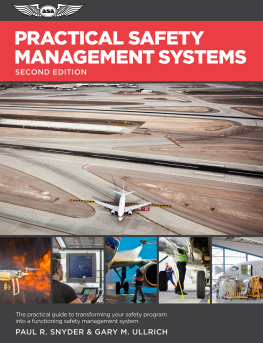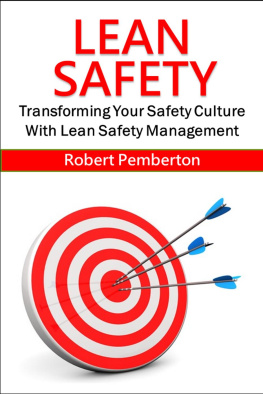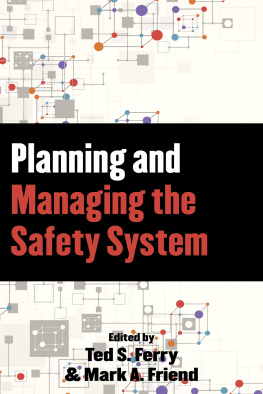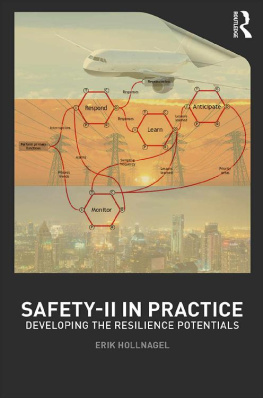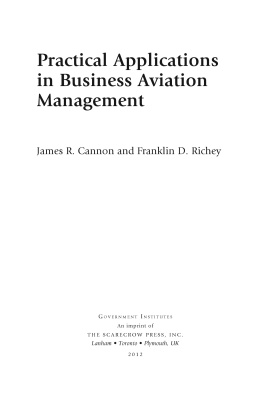Paul R. Snyder - Practical Safety Management Systems: A Practical Guide to Transform Your Safety Program Into a Functioning Safety Management System
Here you can read online Paul R. Snyder - Practical Safety Management Systems: A Practical Guide to Transform Your Safety Program Into a Functioning Safety Management System full text of the book (entire story) in english for free. Download pdf and epub, get meaning, cover and reviews about this ebook. City: Newcastle, year: 2019, publisher: Aviation Supplies & Academics, genre: Business. Description of the work, (preface) as well as reviews are available. Best literature library LitArk.com created for fans of good reading and offers a wide selection of genres:
Romance novel
Science fiction
Adventure
Detective
Science
History
Home and family
Prose
Art
Politics
Computer
Non-fiction
Religion
Business
Children
Humor
Choose a favorite category and find really read worthwhile books. Enjoy immersion in the world of imagination, feel the emotions of the characters or learn something new for yourself, make an fascinating discovery.
- Book:Practical Safety Management Systems: A Practical Guide to Transform Your Safety Program Into a Functioning Safety Management System
- Author:
- Publisher:Aviation Supplies & Academics
- Genre:
- Year:2019
- City:Newcastle
- Rating:5 / 5
- Favourites:Add to favourites
- Your mark:
Practical Safety Management Systems: A Practical Guide to Transform Your Safety Program Into a Functioning Safety Management System: summary, description and annotation
We offer to read an annotation, description, summary or preface (depends on what the author of the book "Practical Safety Management Systems: A Practical Guide to Transform Your Safety Program Into a Functioning Safety Management System" wrote himself). If you haven't found the necessary information about the book — write in the comments, we will try to find it.
The practical guide to transforming your safety program into a functioning safety management system
The advent of the safety management system (SMS) has affected all aviation sectors worldwide, and is now required for most domestic and international air operations, through either regulatory (14 CFR Parts 5, 119, or 121) or voluntary compliance. Its easy to be intimidated by the scope and complexity of SMS, but Practical Safety Management Systems distills the concepts and principles into a practical working format. Universities and training organizations will find guidance and resources to create, implement, and maintain a functioning SMS.
An SMS must be adapted and continuously improved to meet an organizations mission while reducing risk to the lowest viable level for flight departments, independent contractors servicing the aviation industry, air traffic services, and more. Beyond mere theory, this book encourages hands-on exercise and practical application of SMS concepts and principles to varied industry areas such as flight crews, maintenance, air traffic control, airports, and unmanned aircraft systems (UAS).
Beginning with an overview and history of SMS, chapters cover SMS components, costs and development process, approaches to safety culture, human factors, audits and evaluations, and more. Each chapter concludes with review questions. Extensive case studies and references are provided throughout, with additional resources supplied in a Reader Resources webpage. Practical Safety Management Systems is a useful guide for transforming your safety program into an up-to-date and beneficial safety management system.
Paul R. Snyder: author's other books
Who wrote Practical Safety Management Systems: A Practical Guide to Transform Your Safety Program Into a Functioning Safety Management System? Find out the surname, the name of the author of the book and a list of all author's works by series.

